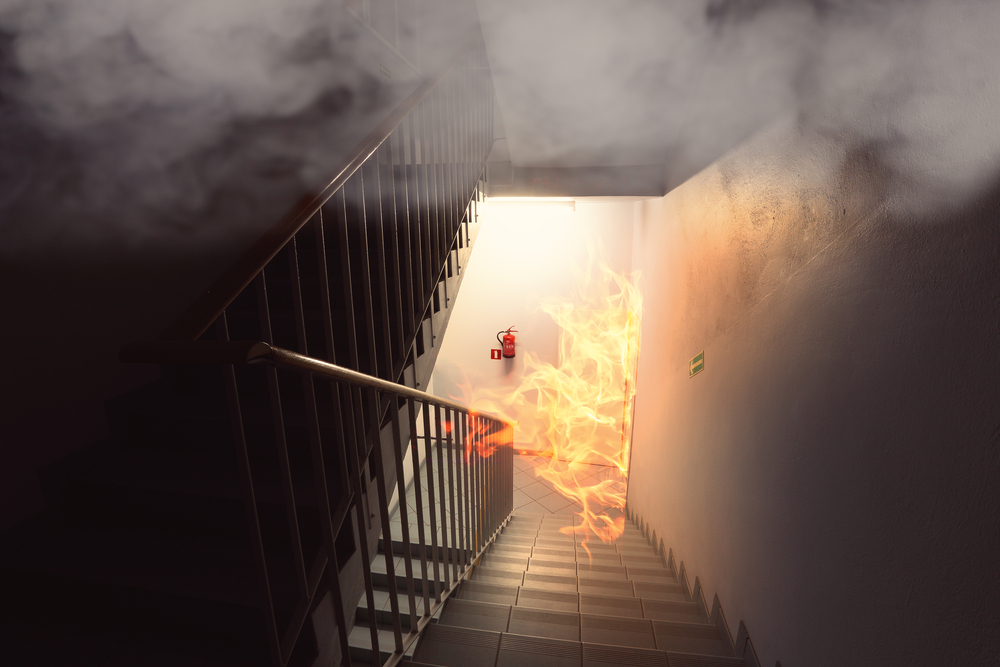
A Guide to Fire Safety Assessments
Fire Safety
Most fires are preventable. Those responsible for workplaces and other buildings to which the public have access can avoid fires by taking responsibility and adopting the right behaviours and procedures.
What are the hazards?
A fire in the workplace presents huge risks to property and the health of your employees and the public.
It can physically damage or destroy buildings, contents and equipment. It can also be responsible for serious injuries and even death.
Common injuries include burns, respiratory damage from smoke inhalation, oxygen depletion and trauma (such as broken bones) from escape attempts.
Fires need three things to start: a source of ignition (heat), a source of fuel (something that burns) and oxygen.
- Sources of ignition include heaters, lighting, naked flames, electrical equipment, smokers’ materials (cigarettes, matches, etc), and anything else that can get very hot or cause sparks.
- Sources of fuel include wood, paper, plastic, rubber, foam, loose packaging materials, waste rubbish and furniture.
- Air is the primary source of oxygen. Other sources include chemicals that contain oxidising agents, and oxygen supplies from cylinder storage and piped systems.
What do I have to do?
Employers (and building owners or occupiers) must carry out a fire safety risk assessment and keep it up to date. This can be carried out either as part of an overall risk assessment or as a separate exercise.
Based on the findings of the assessment, employers need to ensure that adequate and appropriate fire safety measures are in place to minimise the risk of injury or loss of life in the event of a fire.
To help prevent fire in the workplace, your risk assessment should identify what could cause a fire to start—that is, sources of ignition and substances that burn—and the people who may be at risk. Your risk assessment should also identify dangerous substances that can result in fires or explosions.
Once you identify the risks, you can take appropriate action to control them. Consider whether you can avoid them altogether or, if not possible, how you can reduce risks and manage them. Consider how you will protect others if there is a fire.
- Carry out a fire safety risk assessment.
- Keep sources of ignition and flammable substances apart.
- Avoid accidental fires. For instance, make sure heaters aren’t knocked over.
- Ensure good housekeeping at all times, such as avoiding build-up of rubbish that could burn.
- Determine how you can detect fires and warn people quickly if they start, such as by installing smoke alarms and fire alarms or bells.
- Have the correct equipment for putting a fire out quickly.
- Always keep fire exits and escape routes clearly marked and unobstructed.
- Ensure your workers receive appropriate training on procedures they need to follow, including fire drills.
- Review and update your risk assessment regularly.
Case Study
| Scenario | How to Prevent the Fire |
| A shopkeeper regularly put packing waste by the back door of his shop as he stocked the shelves after a delivery. His workers sometimes opened the back door to have a cigarette break outside.
One week he’d left the pile of rubbish for several days and a discarded cigarette butt caused it to catch fire. By the time the fire was spotted and put out, it had caused substantial damage to the shopkeeper’s back door and shelving units. There was a significant cost in damaged stock and repairs. |
This fire could have been easily prevented if the shopkeeper had completed his risk assessment and taken simple steps to control the risks. |
If you would like any more information on fire safety or for a quotation for your premises please contact us on 01727 736970 or complete the form below.
